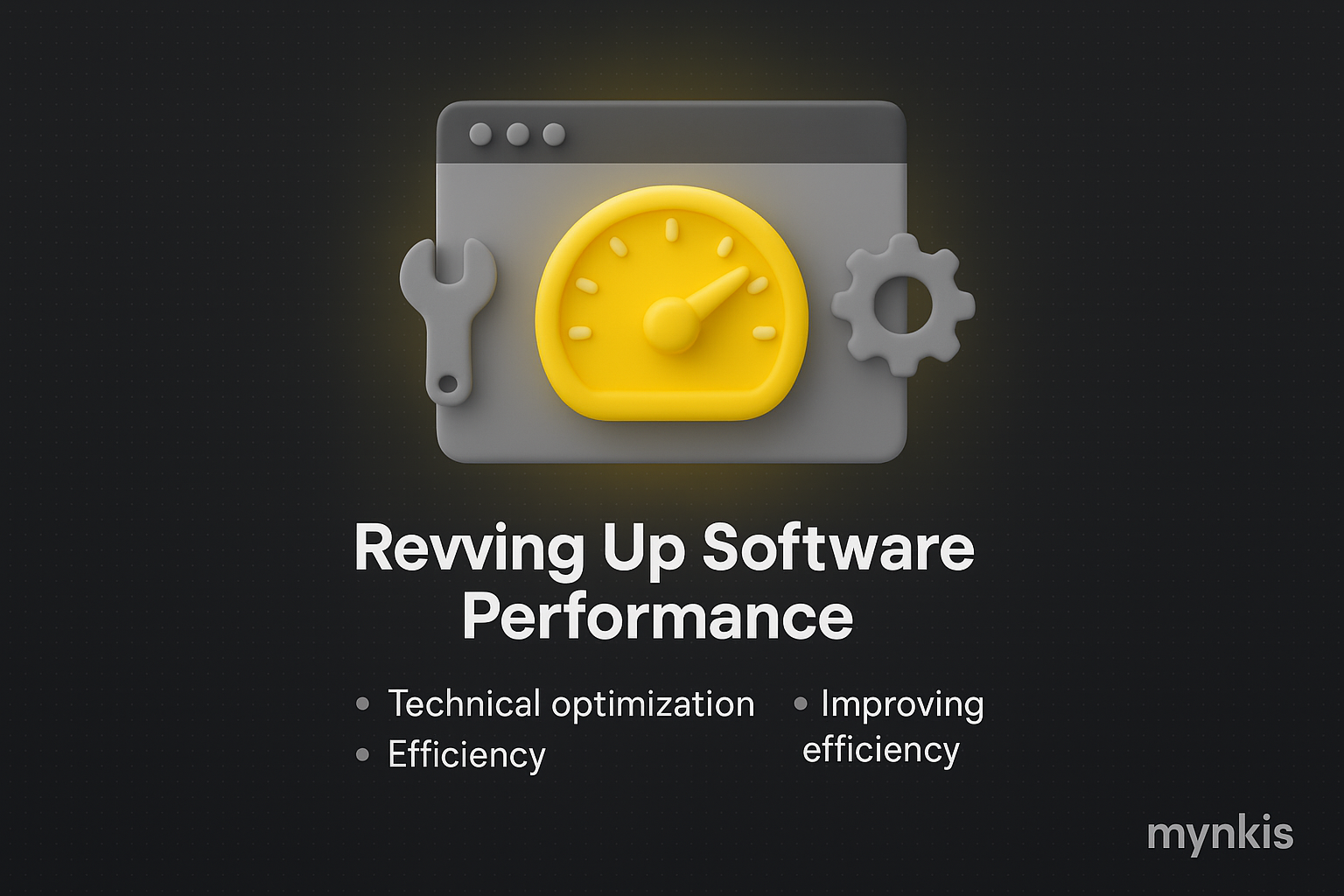Schedule a Demo
Imagine you're behind the wheel of a finely-tuned race car, ready to zoom past the competition. That's what technical optimization feels like for software. It's not just about making your application faster; it's about crafting an experience that leaves your users in awe. Every millisecond counts, and I've seen firsthand how the right optimizations can transform a decent software into an unbeatable industry leader.
At the heart of any software, lie its algorithms and data structures. These are the unsung heroes that dictate how well your software will perform under pressure. In my experience working with practices looking to showcase their expertise online, choosing the right algorithm can make or break your application's efficiency. Whether it's a quicksort for sorting client data or a hash map for faster lookups, the key lies in understanding your data's behavior and predicting how users will interact with it.
Consider a scenario where a dental practice wants to manage patient appointments efficiently. By using an optimal scheduling algorithm, they can reduce wait times and improve the patient experience, turning casual visitors into loyal clients. This is the power of technical optimization—turning seemingly complex operations into smooth, seamless experiences.
Memory management is another critical aspect of technical optimization. Poor memory management can lead to slow performance, crashes, and an overall clunky experience. I've worked on projects where memory leaks were costing clients valuable time and money. By implementing memory-efficient practices, such as caching frequently accessed data or using lazy loading, we were able to transform their software into a lean, mean, performance machine.
When it comes to custom software development, every byte counts. Practices that deal with large datasets, like medical records, can significantly benefit from efficient memory management. By optimizing how data is stored and accessed, you ensure that your website remains fast and reliable, even during peak usage times.
As your practice grows, so does the traffic to your website. This is where load balancing comes into play. Load balancing distributes incoming network traffic across multiple servers, ensuring no single server bears too much load. In my work with operations managers, I've seen how effective load balancing can keep a website running smoothly, even during the busiest of times.
Think of it as directing traffic in a bustling city. You wouldn't want all the cars going down one street, causing chaos and delays. Load balancing ensures your digital traffic flows smoothly, allowing your clients to access your services without hiccups.
Database performance can often be a bottleneck in software applications. Optimizing database queries is essential for maintaining high performance. Based on available research, individual results may vary, but I've consistently found that practices optimizing their database interactions see a significant uplift in user experience. For instance, indexing frequently accessed fields can drastically reduce query times, making your software feel snappier and more responsive.
Let's take the example of a law firm managing client cases. By optimizing their database queries, they can quickly retrieve case files, leading to faster service and more satisfied clients. This is where the technical optimization of custom software development truly shines.
It's not just about the backend; frontend optimizations play a crucial role as well. Minimizing HTTP requests, compressing files, and leveraging browser caching are just a few strategies that can drastically improve load times. In my experience, a practice's website that loads in a blink can greatly enhance user engagement and trust.
Think about it: when you visit a medical practice's website and it loads instantly, you feel confident in their professionalism and expertise. That's the power of frontend optimization—it sets the stage for a positive user experience right from the start.
Optimization is not a one-time task; it's an ongoing process. Continuous monitoring and iteration are key to keeping your software at peak performance. By using tools like application performance monitoring (APM), you can identify bottlenecks and areas for improvement in real-time. In my work, I've seen how practices that embrace this culture of continuous improvement stay ahead of the curve, delivering superior service to their clients.
For instance, a therapy practice might use APM to track how long it takes for a client to book an appointment. By regularly analyzing these metrics, they can make data-driven decisions to enhance their software's performance.
Behind every line of code and every optimization strategy, there's a human element. Understanding your users' needs and expectations is just as important as the technical aspects. I've seen practices succeed by combining empathy with technical prowess, creating software that not only performs well but also resonates with their clients on a personal level.
Consider a mental health practice: by optimizing their software for ease of use and privacy, they foster a safe and welcoming environment for their clients. This holistic approach to optimization—where technical excellence meets human understanding—is what truly sets a practice apart in today's competitive landscape.
